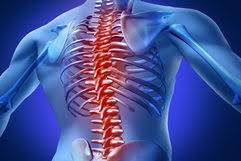
Pain is the primary symptom associated with the majority of musculoskeletal conditions. Its intensity can vary from mild to intense, and it may be brief and temporary or persistent and long-lasting. Additionally, the discomfort can be confined to a specific area or spread throughout the body.
Discomfort and pain are common symptoms of many musculoskeletal conditions. These sensations can range from mild to severe, be short-term or long-lasting, and may be localized or widespread.
Causes of Musculoskeletal Pain Musculoskeletal pain can stem from issues affecting bones, joints, muscles, tendons, ligaments, bursae, or a combination of these structures. Injuries remain the most frequent cause of discomfort.
- Bone Pain: Often described as deep or dull, bone pain commonly results from fractures or trauma. Less frequent causes include infections (osteomyelitis), hormonal imbalances, or tumors.
- Muscle Pain (Myalgia): This pain is generally less intense than bone pain but can be very distressing. Muscle cramps or spasms—such as the notorious “charley horse”—cause sudden, severe contractions. Factors like injuries, reduced blood flow, infections, or specific conditions like polymyalgia rheumatica can lead to muscle discomfort.
- Tendon and Ligament Pain: Often sharper in nature, this pain worsens with movement. Tendinitis, tenosynovitis, and ligament injuries (such as sprains) are common causes.
- Bursae Pain: Bursae, fluid-filled sacs that cushion joints, can become inflamed due to overuse, trauma, gout, or infections, leading to increased discomfort with movement.
- Joint Pain (Arthralgia): Joint pain may arise with or without inflammation (arthritis). Various types of arthritis, including osteoarthritis, rheumatoid arthritis, infectious arthritis, and autoimmune conditions, can contribute to persistent joint discomfort.
- Nerve-Related Pain: Some musculoskeletal conditions, such as carpal tunnel syndrome and other nerve compression disorders, result in burning pain that may radiate and be accompanied by tingling or numbness.
Occasionally, musculoskeletal pain may indicate an issue originating in another organ system. For example, shoulder pain could be linked to lung or gallbladder problems, while back pain might stem from kidney stones or abdominal conditions.
Diagnosis and Evaluation Healthcare professionals assess musculoskeletal pain by identifying affected areas, duration, movement impact, and additional symptoms. Physical examinations, imaging tests (such as X-rays, MRIs, or CT scans), and laboratory tests may help pinpoint the underlying cause.
Treatment and Pain Management Addressing the root cause of pain is essential for effective relief. Common treatment options include:
- Pain Relievers: Acetaminophen, NSAIDs, or stronger medications for severe pain.
- Physical Therapy: Exercises to strengthen muscles and improve mobility.
- Hot and Cold Therapy: Applying heat or cold packs can help alleviate pain and inflammation.
- Immobilization: In some cases, braces or splints may assist in reducing strain on affected areas.

Deixe um comentário